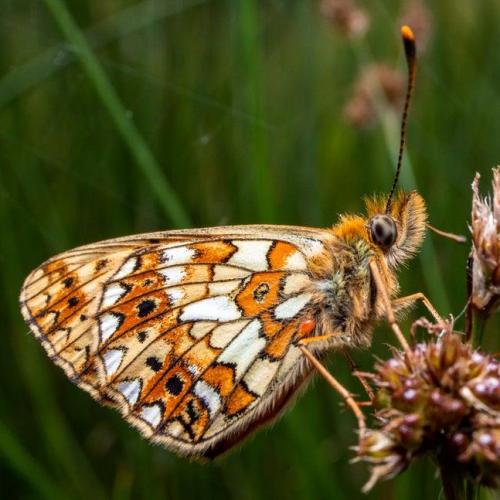Butterfly population given a boost in Shropshire
The National Trust has given a boost to the butterfly population in the Shropshire Hills by planting 20,000 violets, a favourite food for a rare butterfly species.
With 270,000 funding from The Natural England Species Recovery Programme, many dedicated volunteers will start the mass planting of 20,000 marsh violets across the Shropshire Hills this spring. This will be the largest planting of its kind in the UK.
Violets plants are the favourite food of caterpillars of small pearl-bordered fritillary butterflies. By planting the violets it is hoped they attract many more of these rare butterflies.
This ambitious planting is part of the Stepping Stones Project to restore habitat connectivity across the whole landscape and create a sustainable home for not only butterflies but also other wildlife including birds, dormice and otters.
The National Trust is working closely with Shropshire Wildlife Trust, Natural England and the Shropshire Hills National Landscape Partnership, along with various landowners to give these butterflies a helping hand, volunteers have signed up to plant out the first clumps of marsh violets this spring, and the rest in autumn. With 50 plants planted together in 1x1m squares, creating 400 separate areas for the violets to thrive.
The selected sites are close to where the butterflies have already been spotted, but where there are currently too few violets for the caterpillars to feed on.
To prepare for the planting, last year the locations of existing wild marsh violet populations were surveyed with expert advice from local naturalists and guidance from Natural England. Cuttings were carefully taken and propagated at a local wildflower seed and plant nursery. Sourcing locally and then planting locally is key, with everything done within a 20-mile radius.
Last winter volunteers also helped cut back rushes and bracken to open up these wetland areas and make space for the new arrivals.
Through this new mass planting and habitat restoration the plan is to give the butterflies the space to move and flourish. The new areas could start to recolonise within a couple of years.


